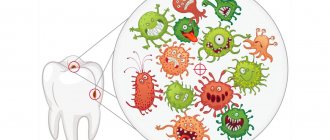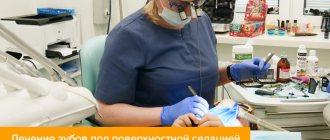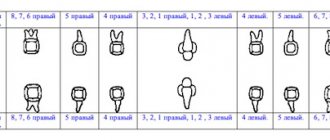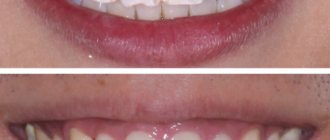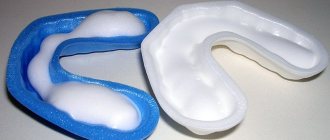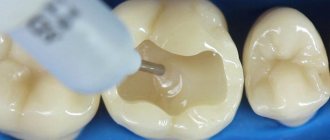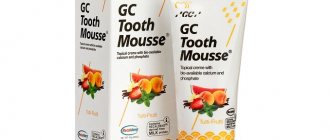Margarita Morozova “Popular Mechanics” No. 3, 2018
The shock and awe of visiting the dentist is familiar to us since childhood. And many adults feel overwhelmed by the jingling of instruments, and sometimes by the mere sight of a dental clinic. As a result, despite all the successes of modern medicine, there is practically no hope for a future without caries. But it is this, together with periodontitis, that is the main cause of tooth loss in people of all ages. The problem stimulates the search for new treatment methods, including in the field of bioengineering. Methods that will allow you to forget about fillings and crowns and simply grow new healthy teeth instead of damaged ones.
Tissue engineering in dentistry has been used since the era of the pharaohs: the oldest known dental implants were found by archaeologists in Egypt. Among them are teeth that were reimplanted into the woman in place of the lost ones and were partially integrated with living tissue. An artificial tooth was discovered in a man's jaw, expertly carved from a mollusk shell 5,500 years ago. But despite the impressive period, complete treatment for a patient with adentia, that is, complete or partial loss of teeth, still does not exist.
Background
around 330 BC Aristotle describes the regeneration of the tip of a lizard's tail. 1950s Two types of stem cells are found in the bone marrow: hematopoietic precursors of blood cells and mesenchymal precursors of bone and cartilage tissue, including teeth. 1981 For the first time, mouse embryonic stem cells have been isolated and grown in vitro. 1985 Stem cells have been found in human dental pulp. 1998 Successful isolation and laboratory cultivation of human embryonic stem cells. 2000 It has been shown that mesenchymal stem cells in the pulp are capable of regenerating dentin-like tissue complexes. 2003 It is possible to isolate a population of stem cells from the still living remains of a decayed tooth. 2004 Finding stem cells in the periodontal ligament, which holds the tooth in place. 2006 Mature differentiated cells from mice have been successfully “reprogrammed” into stem (induced pluripotent) cells. 2007 Induced pluripotent stem cells are derived from human fibroblasts. 2010 Dentin-like complexes were grown from pulp stem cells on an artificial scaffold.
Own or artificial
Orthopedic structures and implants to some extent compensate for the functions of a lost tooth, but these artificial substitutes lack blood vessels, nerve endings and receptors. In addition, they do not form the periodontal ligament, the layer of connective tissue between the tooth root and the bone that forms the wall of the socket. The periodontium helps secure the tooth in the alveolus and ensures its mechanical stability: the strength of the human chewing muscles is as much as 390 kg, and the ligament distributes this pressure between the teeth.
Unlike a tooth, an implant is immobile, and the development of connective tissue around it often ends in inflammation (peri-implantitis) and requires removal of the artificial tooth. In addition, the implant cannot be connected into one structure with the patient’s teeth precisely because of the inability to adequately distribute pressure due to the absence of periodontal tissue. Finally, an implanted substitute requires a much more careful attitude to oral hygiene, which again brings us back to the main source of our problems, the “human factor”. Obviously, the ideal solution would be the technology of growing real living teeth, rather than transplanting artificial ones. So let's get down to business.
The earliest sign of tooth development is the formation of the dental lamina, a horseshoe-shaped thickening of epithelium that extends along the upper and lower jaws of the embryo. After passing through several stages, it forms the roots of individual teeth. Coordination of this process is ensured by at least four epithelial signaling centers, the cells of which secrete substances that regulate tooth formation.
All of the above will also be useful to us for creating new teeth using tissue engineering methods. The “recipe” for growing any biological tissue requires three basic components: stem cells, an extracellular matrix (the scaffold that provides support for developing cellular structures) and, finally, growth factors, combined into the signaling pathways necessary for tooth development. Let's go in order and start with the main characters - stem cells that have odontogenic competence and are capable of developing into dental tissue.
Dental renaissance
Sixteen years ago, the modern classic of Russian literature Viktor Pelevin reminded readers that when you find yourself in an unpleasant situation, you can choose one of two strategies: find out the reasons for getting into this situation or take actions to help you leave it. The second strategy is preferable, but not everyone manages to use it.
Indeed, one can argue and model about the evolution of man and what ruined his teeth, but never come to a final decision. It would be much more useful to learn how to treat teeth not only with fillings and to grow new ones in place of dead teeth, instead of patching up black carious holes with lifeless dentures. Also - but this is already the icing on the cake - it would be good to be able to stop the growth of those teeth that obviously will not fit on the jaw.
But teeth are more complex than it seems at first glance, and therefore it is not so easy to assemble such an organ in a test tube. Each tooth gives rise to many types of cells, the main of which are ameloblasts, which form tooth enamel, odontoblasts, which give rise to the layer under the enamel (dentin), and cementoblasts, which produce cement - one of the means of securing the tooth in the jaw. The first come from the outer layer of embryonic cells - the ectoderm, and the second and third - from a special formation called the neural crest. It is sometimes called the fourth germ layer: there are usually three such leaves, but the neural crest is very different from them. It turns out that neighboring structures within the same tooth have no more in common than hair and nerves.
And that is not all. Fully formed teeth contain cells of the immune system (macrophages, lymphocytes, neutrophils and others), temperature and pressure receptors... The precursors of all these dissimilar cells are different, they need to be mixed in certain proportions, plus substances must be found that allow them to come to terms with unusual neighbors and carry out their functions as if nothing had happened. Therefore, no one has yet been able to create a human tooth outside the body.
But it is not necessary to produce parts of the organism outside of it. Nature will handle it itself: theoretically, it is possible to force the jaws to grow new teeth on their own. This trick can be done at least with mice, which have much fewer teeth compared to us: 16 versus 32 (they lack canines and false molars, that is, premolars).
It turned out that if the Usag-1
,
Spry2
or
Spry4
, he will grow more than 16 teeth. Biologists from Kyoto University suggest that it will be possible to treat a lack of teeth in humans in a similar way: introduce a molecular cocktail of inhibitors of certain genes into the place where it would be good to form a new tooth to replace the lost one, and thereby start the generation of teeth of the third shift - or the first and the second, if researchers are dealing with congenital tooth deficiency.
This way it would be possible to create whole new teeth (top) or individual roots (bottom)
L. Hu, Y. Liu, S. Wang / Oral Diseases, 2017
Share
Dental stem cells
Unlike most mature cells, stem cells are able to undergo many divisions and gradually specialize, forming different types of cells. Embryonic stem cells are totipotent and can develop into any of more than 200 types of adult cells. Postnatal stem cells remain in the tissues of the adult body. They are multipotent, that is, they are able to give rise to only certain types of cells, and are localized in the corresponding tissues, be it bone marrow, blood vessels, liver, skin or dental tissues.
Depending on the location, dental stem cells (DSCs) are divided into stem cells of the pulp, extracted primary teeth, periodontal ligament, gums, dental follicle precursor cells, etc. This gives us many opportunities to obtain them. Pulp stem cells can be isolated directly from extracted teeth - this is a convenient and promising source of DSCs, suitable for the restoration of both dentin, pulp and cement, and bone tissue. In addition, they exhibit pronounced neuroregenerative activity, inhibiting the death of neurons, astrocytes and oligodendrocytes after injury, accelerating the recovery of damaged axons. The population of stem cells from extracted primary teeth can differentiate into cells of bone and nerve tissue, and DSCs from the gums are suitable for the restoration of periodontal tissue, muscles, and even tendons.
The mechanisms of development of odontogenic stem cells have not been fully elucidated, but more than 200 genes operating in them have already been identified. It is clear that each type of DSC has its own characteristics, which promise their use not only in dentistry, but also in other areas of medicine. Another stem cell resource for growing teeth remains induced pluripotent stem cells (iPSCs), obtained by “reprogramming” adult differentiated cells through treatment with a special cocktail of signaling molecules. Scientists continue to develop safe methods for creating iPSCs and using them.
Intercellular matrix
But the resource of stem cells for growing teeth is not even half the battle. For the development and formation of a complex structure of mature tissue, a support, a scaffold of intercellular matrix molecules is required: it is this that supports the attachment, migration and spatial organization of cells. The gaps and pores in it ensure the movement of cells, growth factors and metabolism. An artificial scaffold must be easy to use, biocompatible, degradable in the body and low immunogenicity, good mechanical properties, etc.
Among the synthetic materials for scaffold formation, it is worth mentioning “bioactive” glass, which can grow together with biological tissues, polylactic acid and composites based on metal, ceramics or polymers. All of them make it possible to produce scaffolds of the required shape, although their use remains very limited due to low biocompatibility and toxicity. In contrast, natural biomaterials for scaffolds—such as collagen, chitosan, or hyaluronic acid—are biocompatible and easily biodegradable. However, they are less durable and can cause rejection reactions.
In any case, the ideal scaffold material would be a structure derived directly from natural extracellular matrix polymers or from their synthetic analogues. Pulp and periodontal stem cells growing on such a scaffold, when treated with appropriate signal substances, successfully developed in the odontogenic direction - towards the formation of tooth tissue. However, we will return to this later, but for now we need a third type of ingredients.
Signaling pathways
Stem cells are our main resource, the scaffold is the basis for its development, but their interaction must be orchestrated by signaling molecules, including growth factors and interfering RNA. Growth factors are peptide molecules that transmit signals to control cellular behavior through action on specific receptors on the surface of cells. They provide interconnection and interaction between cells, as well as between them and the extracellular matrix. So, if the carious cavity is close to the sensitive pulp or the patient experiences increased tooth wear, the corresponding growth factors trigger the formation of secondary and tertiary dentin. A number of growth factors have also been identified that act during tooth development, such as bone morphogenetic protein (BMP), platelet-derived growth factor (PDGF) and fibroblast growth factor (FGF). They are delivered to stem cells using nanoparticles or through the scaffold itself, filling it with the desired set of molecules.
Interfering RNA molecules are also used to control cell differentiation. They bind to messenger RNA and stop the synthesis of a particular protein. For targeted delivery, such RNA is converted into DNA and transferred into a cell in the form of a plasmid. Now we have everything we need to obtain a tooth: dental stem cells (assorted), scaffold (product identical to natural) and growth factors (to taste).
Bottom line
Unfortunately, growing human teeth in vitro is still a long way off - at least decades away. However, there is hope that in the coming years there will be a way to force the jaws to create new teeth: this will require targeting the places where we want to see new teeth with a set of activators and suppressors of genes associated with tooth growth.
Some of these genes are already known, and others will be discovered, for example, by “dental atlases” - lists of all cell populations in mature and developing teeth, indicating their molecular features. One such list for people and mice was compiled in 2020 by a group of Russian native Igor Adameyko.
Although it is not yet possible to create full-fledged living replacements for the components of our teeth, the search for dental stem cells itself has proven to be very useful.
Clinical studies of various groups of such cells are already being carried out, and some of them give encouraging results. Svetlana Yastrebova
The recipe is ready
The basic principles of dental tissue engineering have already been developed, and attempts to move on to practical application have been made for more than a decade and a half. English scientists can be called pioneers in growing teeth, who began such research back in 2002. And although their experiments on the regeneration of hard dental tissues did not bring much results, soon scientists from Takashi Tsui’s team conducted more successful experiments that lasted about two years. After solving a number of problems, they managed to isolate dental stem cells from mouse embryos, “assemble” a bioengineered rudiment from them, grow a full-fledged tooth from it and implant it into the jaw of a mouse.
The protocol prepared by Japanese specialists during this work has become one of the key guidelines used by scientists for experiments in the field of tissue engineering. Russian scientists from the Evdokimov Dental University (MGMSU) also relied on it: in 2022, they managed to conduct their own successful experiments in growing mouse teeth. Human teeth are more complex and bulky, and it is not yet possible to grow them. Problems remain unresolved related to the innervation and blood supply of the “bioengineered” tooth, its ligamentous apparatus, and most importantly, the choice of the pool of stem cells.
The fact is that you can get human DSCs from a healthy tooth (by damaging it) or from a tooth with the pulp removed. Available cells, such as gum stem cells, do not have odontogenic ability. It is still yet to be learned how to obtain the necessary DSCs from existing resources or induced pluripotent stem cells. However, there is no doubt that after some time, bioengineering of teeth will help both adults and children completely forget about the trepidation before visiting the dentist.
Teeth growing technology. Myths and reality.
For many years now, humanity has not only dreamed of immortality and technologies that would allow us to get rid of any diseases and eliminate various defects, but has also been working hard in this direction. Rapidly developing bioengineering promises us a lot of surprising and interesting things, including the hope that instead of damaged, destroyed and lost teeth, it will be possible to grow new, absolutely complete molars and not resort to installing artificial root implants and dentures.
Scientists have already discovered the gene responsible for tooth growth and enamel formation, and have also conducted a number of fairly successful studies on growing teeth in laboratory conditions for mice and rats. However, to this day there are no reliable facts confirming the possibility of transferring these technologies to humans and the readiness of such methods for widespread implementation in world dentistry.
Japanese scientists have officially announced the successful results of an experiment in which they grew a new tooth from mouse mesenchymal and epithelial cells (cells that are slightly higher than stem cells, i.e., more differentiated). To do this, the cellular material was placed in a special collagen frame and special technologies for growing new tissues were used.
Scientists actually managed to grow a new tooth consisting of dentin, pulp, enamel and having blood vessels and periodontal tissue. This tooth, measuring only 1.3 mm, or rather a tooth germ, was planted in an eight-week-old mouse into the socket of an incisor that had just been removed under anesthesia. An examination performed after two weeks showed that the new tooth had taken root well and began to grow and function in the same way as ordinary, natural mouse teeth, no different from them either in strength, structure, or appearance.
Thus, experts completely replaced the animal’s tooth with bioengineered materials. To make the observation of a growing tooth more accurate and clear, scientists added a green fluorescent protein gene to the cells. Thanks to this, it was possible to see exactly how cell division occurred and judge how correct this process was.
Experts say that the work done is an excellent basis for further research in this direction. In the future, it is planned not only to grow new teeth for humans in laboratory conditions (“in vitro”), but to use at least two methods for this:
- external - the new tooth is completely grown outside the body and then implanted into the patient;
- internal - a new tooth grows directly in the patient’s oral cavity from cells planted and pre-treated in the laboratory.
Today, specialists dealing with the problem of growing new teeth using bioengineering technologies face several challenges. First of all, scientists need to:
- improve the process of cell division in such a way as to ultimately achieve the formation of teeth with a natural ratio of enamel, dentin and pulp;
- to ensure that the new tooth will have the required size and shape, i.e. that a chewing tooth will not grow in place of the incisor and vice versa;
- achieve a high percentage of engraftment of the planted bioengineered material.

